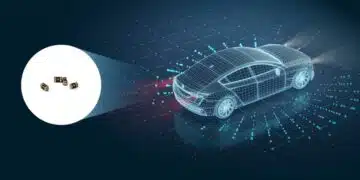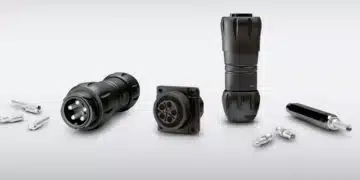This Würth Elektronik webinar presentation delves into the significance of molded power inductors in today’s market, focusing on the phenomenon of degradation and the newly identified percolation effect, its detection, and its influence on DC-DC converter design.
The higher electrical and thermal stresses over time can lead to an increase in magnetic core loss due to the degradation of the insulation between magnetic particles.
Würth Elektronik defines this degradation as a percolation phenomenon. But what exactly is percolation and what are its repercussions? And more importantly, how does it affect the long-term performance of a DC/DC converter?
Percolation Phenomenon and Reliability of Molded Power Inductors
Molded power inductors are witnessing a robust growth trajectory despite current economic challenges. Projections indicate an expansion from 2.5 million units to nearly 5 million, with a CAGR of 6.6%. This growth is driven by advancements in GaN technologies, SiC families, and the rising demand for efficient, reliable components in automotive and smart devices.
Importance of Reliability
Reliability stands as a critical factor due to increasing applications in AI, embedded systems, and high-voltage designs. Traditionally, capacitors and cooling systems were considered primary failure points in DC-DC converters. However, recent insights reveal that molded power inductors also present reliability concerns due to an unexpected degradation phenomenon.
Discovery of the Percolation Phenomenon
Our research uncovered a degradation pattern not attributed to conventional factors like temperature or saturation. Instead, we identified a percolation phenomenon—an internal flow of energy through connected particles within the inductor material. This transition from an insulated to a conductive state significantly impacts performance, leading to increased core losses and reduced efficiency.
Experimental Analysis
Through simulations and real-world application tests, we observed:
- Ripple Current Variations: Unexpected increases in ripple current indicating percolation onset.
- Temperature and Voltage Stress: High thermal and electrical stress accelerated the formation of percolation networks.
- Material Degradation: Changes in inductance and resistance values, even without visible physical cracks, suggesting internal structural failures.
Implications for DC-DC Converter Design
The percolation effect results in:
- Increased power losses and reduced efficiency.
- Elevated harmonic distortions impacting sensitive applications like wireless communication and embedded systems.
- Potential thermal runaway scenarios if not detected early.
Mitigation Strategies
To address these challenges:
- Enhanced Material Composition: Using advanced binders and coatings to delay percolation onset.
- High-Temperature Testing: Prolonged testing beyond standard 1,000-hour benchmarks to identify latent degradation.
- Improved Detection Techniques: Monitoring changes in Q-factor and ripple current to detect early signs of percolation.
Conclusion
The percolation phenomenon represents a pivotal discovery in understanding the long-term reliability of molded power inductors. Our continued research at Bure Electronics aims to develop materials and designs that mitigate this effect, ensuring robust performance across diverse applications.































